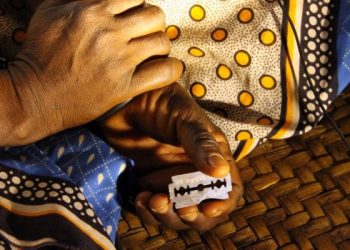In an era defined by a remarkable decline in the deaths of children under the age of five in several parts of the world, it is tragic that the reverse is the case in Nigeria. Instead of deaths among newborns dropping, it was reported last week that Nigeria is one of the two countries –India being the other – where children are dying in their thousands before they celebrate their fifth birthday. This is shocking.
The numbers tell the depressing story.“About half of under-five deaths occur in only five countries: India, Nigeria, Pakistan, DR Congo and China. India (21 per cent) and Nigeria (13 per cent) together account for more than a third of all under-five deaths,” says UNICEF in its 2014 Millennium Development Goal 4 report. While no preterm death is welcome, India logs such a high rate because of its population of 1.27 billion. With an estimated population of 170 million, Nigerian authorities have no excuse for our retrogression.
UNICEF further stated that under-five deaths in Nigeria had escalated steeply from 29 per cent in 2012 to 32 per cent in 2014. It said, “Every single day, Nigeria loses about 2,300 under-five-year-olds. This makes the country the second largest contributor to the under–five mortality rate in the world.” Yet, another report by a British charity, Save the Children,”Ending Newborn Deaths,” said in 2012 that Pakistan had the highest rate of first day deaths and stillbirths at 40.7 per 1,000 births, followed by Nigeria (32.7), Sierra Leone (30.8), Somalia (29.7), Guinea-Bissau (29.4) and Afghanistan (29.0).
That is not all. In its “Where-to-be-Born” listing, the Economist Intelligence Unit gave Nigeria a resounding thumbsdown. It reported that out of 80 countries assessed, Nigeria was the worst place in the world for a child to be born in 2013. According to health practitioners, over 250,000 newborns die in Africa annually in the first month of life from preventable and treatable illnesses, with Nigeria and DR Congo recording the highest number of fatalities.
But make no mistake about the disturbing trend. The frightening figures of infant deaths are part of a bigger picture of the horrifying rot in Nigeria’s health system, crippling poverty and gnashing illiteracy rates occasioned by corruption and poor governance. The infant mortality rate, which stood at 87 per 1,000 live births in 1990, climbed up to 100 in 2013. Last Wednesday, the United Nations Population Fund stated that “110 Nigerian women die daily from pregnancy and child related complications.”
Now, the question is: Where are we getting it wrong? Despite several attempts at reform over the past 30 years, a 2008 WHO report said Nigeria still lacked a clear and coordinated approach to primary health care. According to Dele Abegunde, a Nigerian health economist working with WHO’s Department of Chronic Diseases and Health Promotion, quoted in the report, “What the early policy-makers understood as health was hospitals somewhere – grand, big elephants – 50- to 100-bed hospitals. But the beds were empty because services were not designed to respond adequately to the needs of the people. The impact of that in the 1960s was that life expectancy did not improve and diseases were prevalent because secondary-care hospitals really didn’t do much to prevent diseases. They cared for the people once they had them.” This was a grievous mistake.
The tragic reality is that our governments have been lurching from shambles to debacle in the implementation of a sound healthpolicy. Apart from the wonderful period of Olikoye Ransome-Kuti as Health Minister, our health policy has always been deficient in primary health care. But quite strategically, it is the level of health care that places emphasis on reducing exclusion and social disparities in health (universal coverage reforms); organising health services around people’s needs and expectations (service delivery reforms); integrating health into all sectors (public policy reforms); pursuing collaborative models of policy dialogue (leadership reforms) and increasing stakeholder participation that is critical. This explains why 700,000 under-five Nigerian children died between 2000 and 2010. Sixty per cent of the victims lost their lives to malaria (20 per cent), pneumonia (17 per cent), prematurity (12 per cent) and diarrhoea (11 per cent). Although deaths from measles have decelerated, in 2013, the disease broke out in full force in 12 Northern states, infecting 4,000 children and killing 36.
But we have no excuse for the awful figures. Coming out of colonialism, Nigeria had one of the best health systems in the Commonwealth. If positive change is to emerge, we need urgent measures to combat these negative indicators. From the way health authorities rose fiercely to curtail the Ebola Virus Disease, it is evident that with a strong political will the country has the requisite human and financial resources to tackle any debilitating health challenge. The silver bullet strategy is to provide the best available care to mothers and infants across ethnic and geographic divides.












































